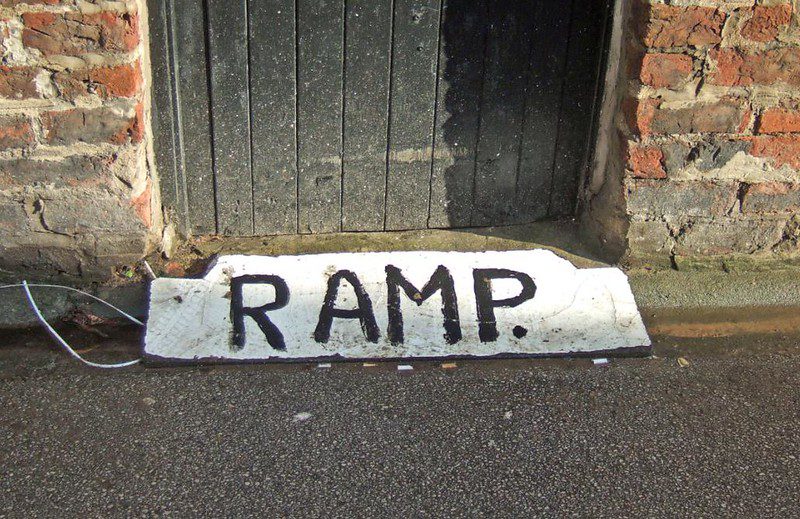
I’m no lawyer. So it was with more than a little trepidation that I decided to sit down and actually read the 64 page decision (here). But I am glad I did. The Justices laid out a surprisingly clear summary of what is at stake in not just this case but the whole string of related inclusionary housing decisions. What emerges is a story of a multi-decade coordinated effort by the real estate development industry to limit the reach of inclusionary housing—an effort which the CA Supreme Court has taken a surprisingly strong stand against in this decision.
One of the high-stakes questions at issue is what standard courts should use when they determine whether government actions are considered “takings.” If a government takes your property for some public purpose, like say building a freeway, you are entitled to compensation. But when they regulate the use of your land, you are not compensated even if that regulation reduces the potential value of your land. As long as the regulation is reasonably related to the public welfare, the courts are reluctant to second guess local legislative bodies.
But the same courts apply another much stricter standard for government actions designed to mitigate the impact that a development might have. This standard, known as Nolan/Dolan after the two court cases that established it, requires that the jurisdiction prove that there is an “essential nexus” (or relationship) between the required mitigation and a problem caused by the project itself, and that the requirements be “roughly proportional” to the likely impact of the proposed project.
Understandably, the builders would like inclusionary housing programs to be subject to the Nolan/Dolan standard because it would entitle them to compensation any time an inclusionary program imposed a burden that was greater than the contribution that their specific project made to the need for affordable housing. For several decades they have been making this case in court.
Back in the late 1990s, home builders sued the City of Napa, seeking to overturn Napa’s inclusionary housing ordinance. The California Court of Appeal’s 2001 decision in the case upheld the fundamental constitutionality of inclusionary housing programs and stated quite clearly that requiring developers to provide affordable units was no different than any other land use regulation and was therefore not subject to the higher Nolan/Dolan standard.
That might have been the end of it, but in 2002 the CA Supreme Court’s decision in the San Remo Hotel case imposed a standard like Nolan/Dolan in response to a San Francisco ordinance that required payment of a fee for affordable housing when developers converted residential hotels to tourist use. The court upheld San Francisco’s fee but argued that because it was designed as a mitigation, it must be proportional to the impact of the development.
Citing this San Remo Hotel decision, the CA Court of Appeal’s 2009 Patterson decision seemed to extend the Nolan/Dolan type standard much more broadly to all inclusionary housing “in lieu” fees. In the wake of this decision, a number of cities began conducting “nexus studies” to justify their in lieu fees.
In the recent San Jose case, the California Building Industry Association (CBIA) was hoping to extend this trend even further by arguing that the onsite unit requirements typical of most inclusionary housing programs should also be subject to the Nolan/Dolan standard.
The decision summarized the building industry position this way:
“In the present case, however, CBIA contends that this traditional standard of judicial review is not applicable and that the conditions that the ordinance imposes upon a proposed new development are valid only if those conditions bear a reasonable relationship to the amount of the city‘s need for affordable housing that is attributable to the proposed development itself…” (italics added)
In some ways this seems like a technical distinction—and in some places it may be. New development unquestionably does contribute to the need for affordable housing, but it would be a strategic mistake for advocates of inclusion to let the builders box us into this corner. Inclusionary housing programs don’t focus on new development because that development is the cause of the widespread affordable housing problem. We focus on new development because we see that new development can be a key part of the solution and it is the job of government to find solutions to people’s problems.
Yesterday’s decision makes a compelling case that ensuring a supply of affordable housing is a legitimate function for land use regulation:
“If a municipality finds that it is in the public interest, it may specify where certain types of retail establishments may be operated and other areas where they may not… Similarly, if a municipality determines that a particular neighborhood or the community in general is in special need of a specific type of residential development or business establishment—such as a multiunit residential project or a retail shopping center—it may adopt land use regulations to serve such a need… The objectives of increasing the amount of affordable housing in the city… and of locating such housing in economically diverse developments are unquestionably constitutionally permissible purposes.” (Emphasis added).
The Court strongly rejected the CBIA’s argument that inclusionary housing requirements should be subject to a higher standard:
“when a municipality enacts a broad inclusionary housing ordinance to increase the amount of affordable housing in the community and to disperse new affordable housing in economically diverse projects throughout the community, the validity of the ordinance does not depend upon a showing that the restrictions are reasonably related to the impact of a particular development to which the ordinance applies. Rather, the restrictions must be reasonably related to the broad general welfare purposes for which the ordinance was enacted.”
Beyond that, they concluded that the Patterson court had misinterpreted the San Remo Hotel decision:
“we conclude that the City of Patterson decision was incorrect… Unlike the long-term rental replacement in lieu fee in San Remo Hotel, the affordable-housing in lieu fee in City of Patterson was not imposed for the purpose of mitigating an adverse effect that was caused by the developer but was imposed to further the very different public purpose of increasing the stock of affordable housing in the city to meet the need for affordable housing…”
Overall, the San Jose decision represents a very strong statement that Nolan/Dolan type standards should not be applied to inclusionary housing programs.
Tragically, this decision may not change much on the ground. In yet another 2009 decision, Palmer, the CA Court of Appeals ruled that CA’s Costa Hawkins anti-rent control legislation applied to inclusionary rental units. Because the San Jose case does nothing to overturn Costa-Hawkins, inclusionary programs can only be effectively enforced in for-sale projects. Rather than overlook rental development, many jurisdictions have adopted Affordable Housing Impact Fees which require developers of market rental projects to pay a fee. But these fees are explicitly structured as ‘mitigations’ and are therefore subject to Nolan/Dolan standards. Cities generally adopt these fees after conducting detailed “nexus studies” and limit the fees to only the level that the study says is proportional to the need for new affordable housing caused by new development. In many cases, the impact fees adopted after these studies have been significantly lower than the in lieu fees that the same jurisdictions had been charging before Palmer.
In 2013, the CA Legislature passed a bill that would have solved this problem by clarifying that Costa-Hawkins does not apply to rents set under local inclusionary housing ordinances, but the bill was vetoed by Governor Brown. Without that kind of change, this week’s Supreme Court decision is likely to leave California’s cities in exactly the position that the building industry has wanted them all along: jumping through the Nolan/Dolan hoop and limiting their policies to only the portion of the housing problem caused by new development.
(Image: Tom Hilton via Flickr, CC BY 2.0)






[recapping from our Twitter chat]:
You say “new development unquestionably contributes to the need for affordable housing.” But isn’t it plausible that new dev, in many cases, has net effect of increasing, not harming, overall affordability?
Also, you say industry goal is for policy to focus only on “portion of the housing problem caused by new development.”
I don’t see that; rather, a view, as Chin write in his opinion in court ruling, that “the community as a whole should bear the burden of furthering this interest [affordability].”
In my opinion, it’s cities that are mistaken in “limiting policies to…new development”, vs pursuing shared & broad solutions. And the core question should be what are best & sufficient policies to address our housing needs, not merely what is legal.
RJ > Yes, everyone should share burden of affordable housing but
RJ> only some people own buildable land.
RJ> It is fair to make them help.
If we believe more housing production is needed, putting further (or often sole) burden on it is counterproductive.
Much more fair would be broadly-shared tax, eg on windfall property value gain (“unearned increment”).